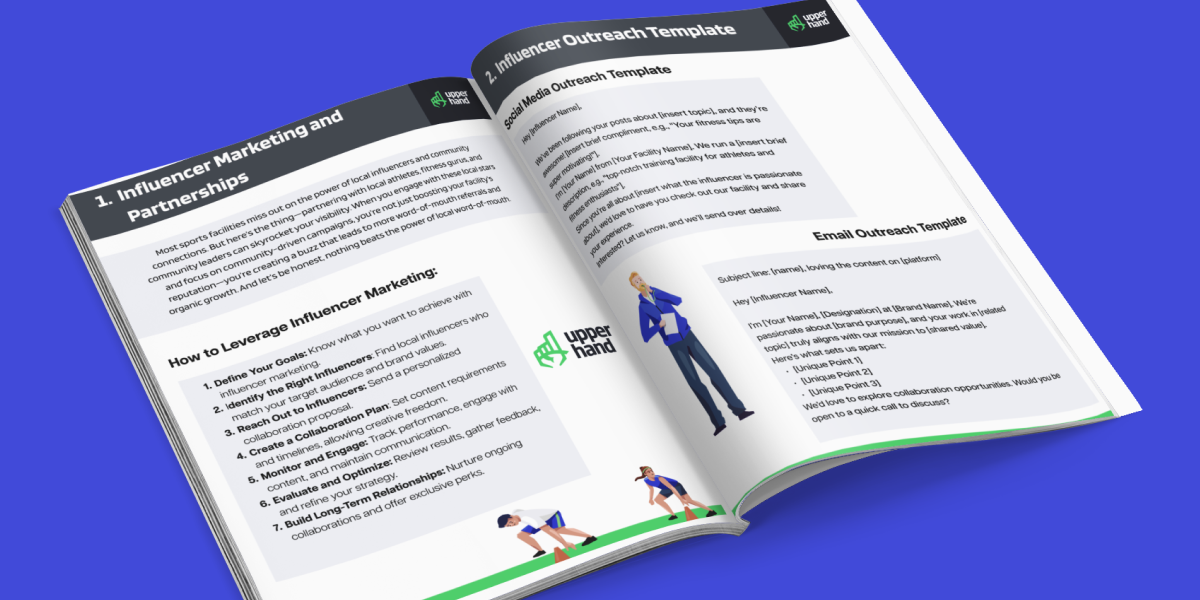
Most sports facilities assume that keeping their doors open and maintaining a steady flow of clients is enough. But the truth is, growing a sports

Whether you’re a business owner, coach, or staff at a studio or training facility, metrics are key to your success. They help you evaluate the performance of the business, team, and individual contributors. One key metric to track in order to reflect the success of your business is monthly recurring revenue (or MRR).
MRR stands for monthly recurring revenue. It’s a normalized measure of a business’ predictable revenue that it expects to earn each month. For example, if you have 20 customers and they pay you $100 per month, your MRR would be $2,000.
MRR is a momentum metric. It allows you to anticipate and plan for recurring revenue, even into the future. As a coach, trainer, or business owner, you know how important momentum is in achieving growth and change for your clients and athletes. If you have dreams of opening a new facility, upgrading your equipment, or just growing your business, the most important metric you can track is your monthly recurring revenue.
So, what is MRR, and why is it important for your business?
MRR, or Monthly Recurring Revenue, is the sum of recurring revenue that you generate month over month. Recurring revenue is income that you can expect to collect on a regular basis.
For sports and fitness businesses, MRR is an efficient way to track expected revenue brought by your memberships.
There are different membership models for sports and fitness businesses to use to bring in recurring revenue, including open facility memberships, service memberships, training memberships and team memberships. Each of these membership models have their pros and cons, so it’s important to remember that there is no “right” model for all businesses.
Monthly Recurring Revenue is important because it is predictable and stable. It allows you to see a clear picture of your growth and business health, as well as accurately project and anticipate future revenue, rather than worry about one-time payments. Over time, a consistent revenue stream brought by these memberships will allow you to make better decisions to scale up your business.
Are you looking to expand your business footprint by opening a new location? Do you need to adjust your pricing to boost your membership numbers? Do you have monthly metrics to report to corporate?
MRR will allow you easy access to these insights and more.
Now that you know what Monthly Recurring Revenue is, how can you track MRR for your business? Simply put, you will multiply the monthly membership cost by the number of members in that membership.

So, let’s say you offer a monthly “Gold” Membership at your facility. Clients who sign up for this membership pay a monthly fee to access the benefits, like a set number of private training sessions and a discount on retail items.
In this example, let’s say this Gold Membership costs $100 per month.
Using an MRR Calculator, you would multiply this monthly membership cost by the total number of clients enrolled in that membership. So, if you had 50 members in your Gold Membership, your math would look like this:
Monthly Membership Cost x Number of Members that Month = MRR
$100 x 50 members = $5,000
In this instance, your Monthly Recurring Revenue would equal $5,000.
If you have multiple memberships at varying prices, you would have to run this calculation for each membership option, then sum all of your values together for your total MRR. Or, you may want to use a different formula.

Another way to calculate your MRR is to multiply your Average Revenue Per Client (ARPC) by the number of clients. ARPC is the average cost that each client would pay. So, if you have 10 members in your Gold membership that costs $100 per month, and 10 members in your Silver membership that costs $50 per month, the average price that a client pays is $75. You would then multiply this ARPC value by the total number of members (20) to arrive at $1,500 in MRR.
As you get started calculating your MRR, here are a few common mistakes to keep in mind.
Your MRR is your Monthly Recurring Revenue, so you should only include those payments that are recurring. It is important to distinguish the difference between recurring payments and one-time payments. Recurring payments are those you can expect to earn regularly (like revenue from memberships), even into the future. A one-time payment (for example, for a single lesson) may or may not happen again. When using an MRR Calculator, inclusion of one-time payments will skew your results and give you an inaccurate picture of your business health.
Similar to above, you must ensure that any number you include reflects a monthly payment. Say your client decides to pay for their monthly “Gold” membership upfront for a year. Great! Using the example from above, you’ve just secured $1200. However, MRR is used to measure momentum, not cash flow.
If a client does decide to pay the full cost up front, the subscription value should be amortized, meaning spread out over the duration of the membership. Instead of including this full $1200 payment in your monthly recurring revenue calculations, you would divide this value by the 12 months that this client paid for to arrive at a $100 monthly revenue value.
One other commonly overlooked issue is not accounting for any discounts. If you offer a discounted membership or a coupon code to a client, be sure to use the discounted rate in your math. For example, if one client is paying $80 instead of $100, then you would need to adjust your calculations to include the $80 amount.
Let’s say you have 3 members who are in your Platinum membership, which costs $120 a month. Two of your members pay full price, but your third member was offered a discount, so they only pay $100 per month.
To calculate your recurring revenue for your Platinum membership, you would find the sum of what each member is paying; in this case $120 + $120 + $100 = $340.
It goes without saying, the more differences you have in your pricing, the more complex your math will become. That is why we have built a free calculator download to help you with this process.
Now we’ve outlined MRR and how to calculate it, but why should you be tracking monthly recurring revenue for your sports and fitness business?
“The value of membership performance data is endless,” says Keely Sustarsic. “From adjusting membership pricing, understanding projected revenue for things like hiring additional staff, investing in new facility equipment or even expansion opportunities…the data membership analytics will provide to customers will help businesses stay informed and make better business decisions.”
As previously outlined, MRR is a way to track momentum, not cash flow. It gives you an idea of where your business is at, and where it is headed. The most successful businesses have a stable source of income, often provided by a membership-based offering. To increase the stability of your business, you will want to monitor your current performance and momentum. For example, if you have seen a lot of new customers joining or upgrading their membership level, you should consider adjusting your pricing.
In addition to tracking your performance, you can also use this data to predict future revenue. As you continue to collect this data, you will be able to glean insights into your customers and their purchasing behavior. Tracking monthly recurring revenue will allow you to see which months tend to bring in higher revenue, and which months are not as profitable. This information helps you to plan for both your fixed and variable costs.
The data that MRR calculators provide will also allow you to make smarter decisions about where to invest your money. After all, it is hard to run a successful business without a steady stream of income. Being able to identify trends in your monthly recurring revenue will help you plan for investments such as upgrading equipment, hiring additional staff, or adding more class times.
Once you have an accurate pulse on your monthly recurring revenue, you will be able to make adjustments to your business strategy to continue to grow that number. Some things you might consider include raising your membership prices or finding new prospective clients who will be interested in your memberships. In addition, you could market the benefits of your memberships to current clients and encourage them to turn their one-time payments into recurring revenue.
Overall, the more complex your business model, and the more members and memberships you have, the more tedious, time consuming, and erroneous your reporting will be. Using a template to calculate your MRR will help you to alleviate some of these pains.
See how you can put your recurring revenue reporting on auto-pilot. Get a demo today.